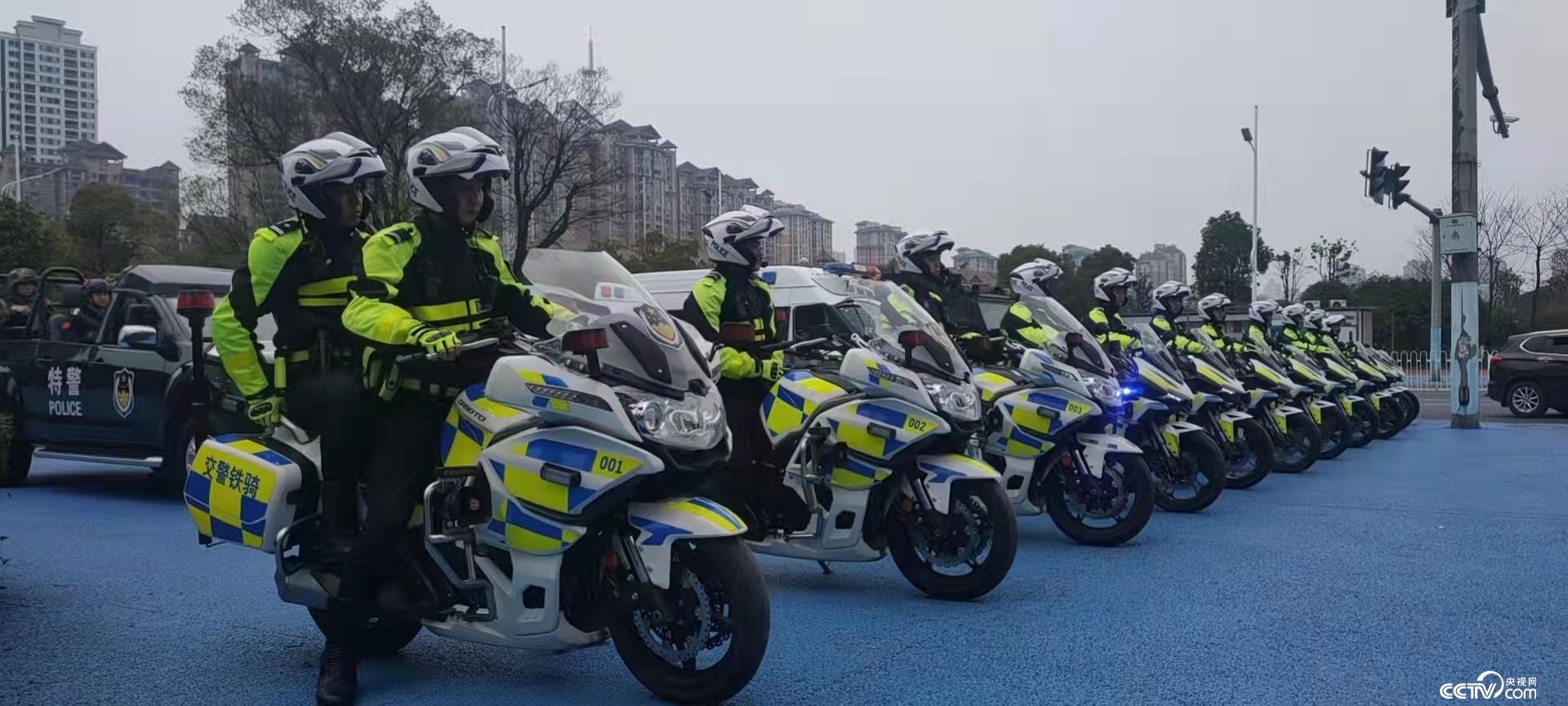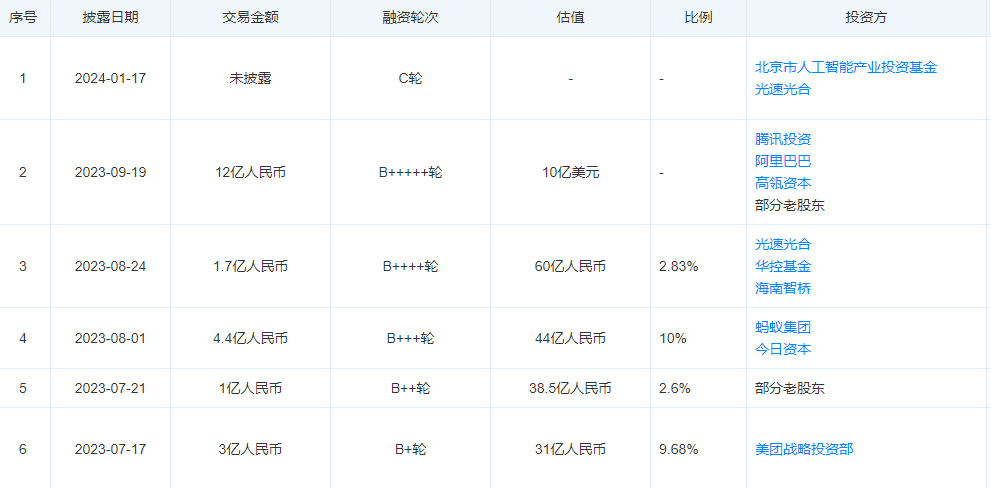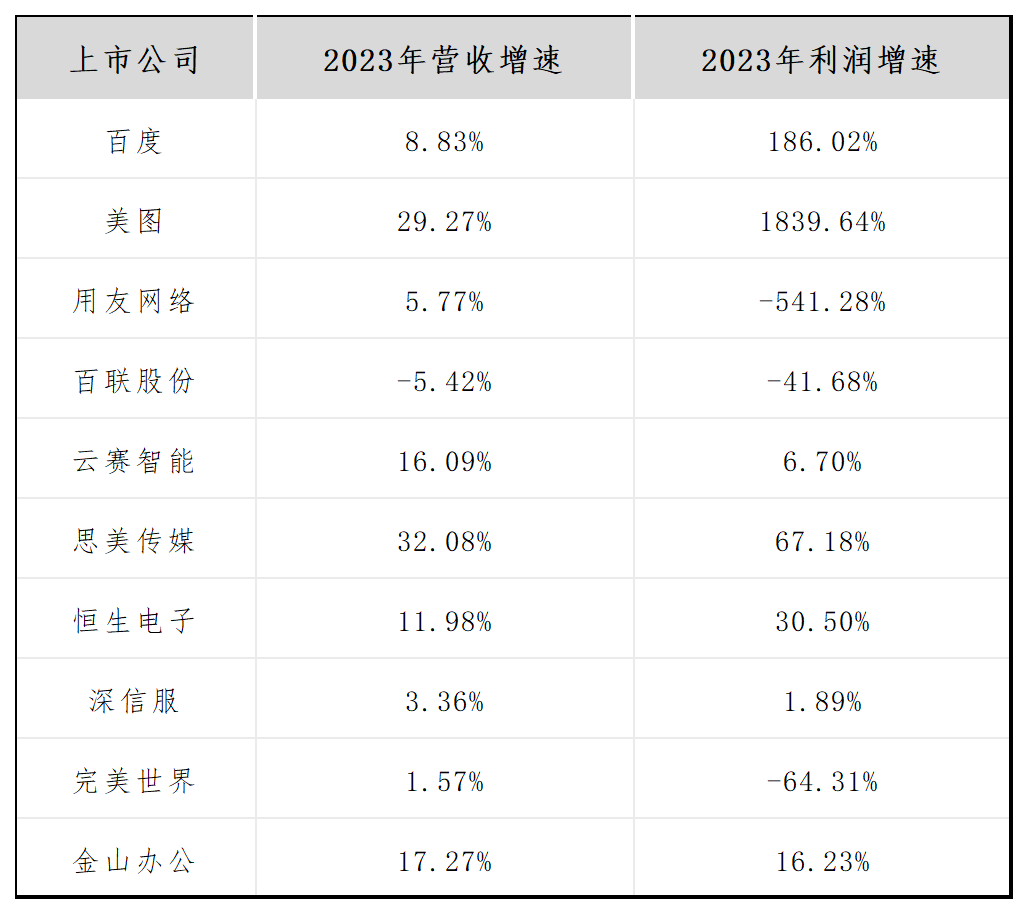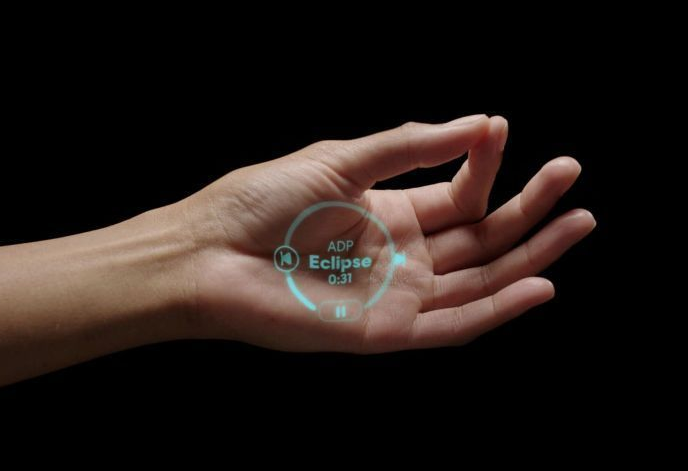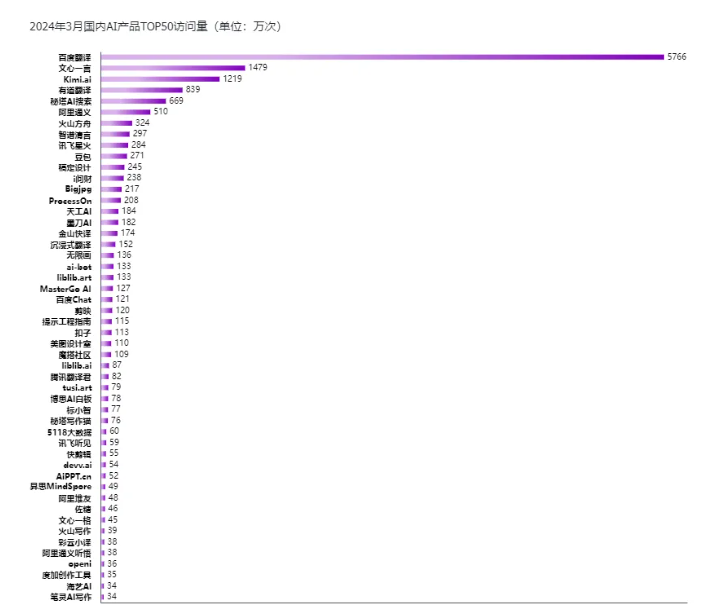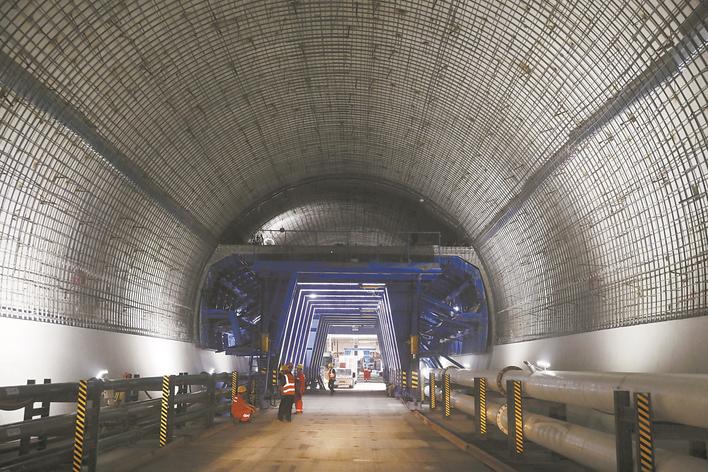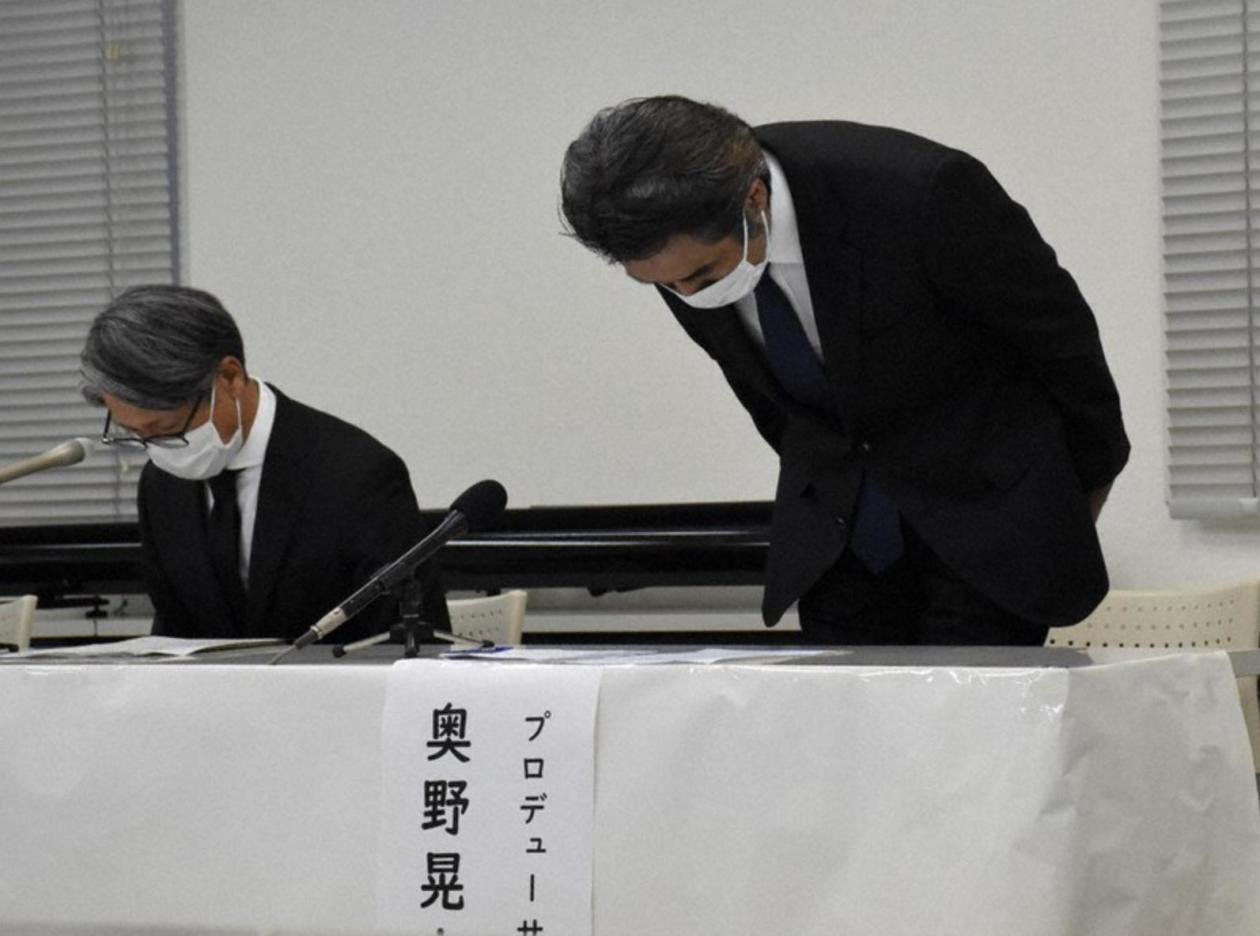CCTV News:On February 21st, the website of the Ministry of Agriculture and Rural Affairs released the implementation opinions of the Ministry of Agriculture and Rural Affairs on the implementation of the deployment of the key tasks of comprehensively promoting rural revitalization by the CPC Central Committee in the State Council in 2023. The details are as follows:
2023 is the first year to fully implement the spirit of the 20th Party Congress, and it is also the first year to accelerate the construction of an agricultural power. Agricultural and rural departments and rural revitalization departments at all levels should fully implement the spirit of the 20th Party Congress and the Central Economic Work Conference and the Central Rural Work Conference under the guidance of the Supreme Leader’s Socialism with Chinese characteristics Thought in the new era, thoroughly implement the important exposition of the Supreme Leader’s General Secretary on the work concerning agriculture, rural areas and farmers, completely, accurately and comprehensively implement the new development concept, accelerate the construction of a new development pattern, and strive to promote high-quality development. Adhere to and strengthen the Party’s overall leadership over the work concerning agriculture, rural areas and farmers, give priority to the development of agriculture and rural areas, adhere to the integrated development of urban and rural areas, anchor the goal of building a strong agricultural country, fully adhere to the two bottom lines of ensuring national food security and not returning to poverty on a large scale, solidly promote key tasks such as rural development, rural construction and rural governance, comprehensively promote rural revitalization, accelerate the modernization of agriculture and rural areas, and build a livable, suitable and beautiful countryside, thus laying a solid foundation for making a good start in building a socialist modern country in an all-round way.
In terms of work layout, we will focus on promoting "three synergies". First, work together to promote capacity improvement and structural optimization. Adhere to ensuring the stable and safe supply of grain and important agricultural products as the top priority, consolidate the foundation of food security in all directions, and enhance the comprehensive agricultural production capacity. Vigorously develop modern facility agriculture, speed up the construction of a diversified food supply system, and strive to achieve a new improvement in food security and continuous optimization of agricultural production structure. The second is to jointly promote the consolidation of achievements and increase farmers’ income. Put the people out of poverty in the overall pattern of increasing farmers’ income, focus more resources on industrial employment and entrepreneurship, take multiple measures to enhance the endogenous development momentum, broaden the channels for farmers to increase their income and become rich, and strive to achieve steady growth of farmers’ income and continuous consolidation and expansion of poverty alleviation achievements. The third is to jointly promote rural construction and rural governance. Adhere to both material civilization and spiritual civilization, rectify and improve rural living environment, improve rural infrastructure construction and public service quality, enhance rural governance efficiency, strengthen rural spiritual civilization construction, strive to achieve a new foothold in livable and suitable business and beautiful rural construction, and accelerate the improvement of rural production and living conditions.
First, pay close attention to grain and agricultural production to ensure the stable and safe supply of grain and important agricultural products.
(1) Go all out to win a bumper harvest of grain. We will launch a new round of actions to improve the grain production capacity of 100 billion Jin, formulate implementation plans, strengthen the construction of farmland facilities, promote agricultural scientific and technological innovation, and consolidate the basic support of national food security. It is necessary to stabilize the area, increase the yield per unit area, and ensure that the national grain output remains above 1.3 trillion Jin. Compaction is responsible for stabilizing area. Strictly implement the assessment of food safety with the same responsibility of the party and government. With the consent of the State Council, the grain production targets and tasks will be assigned to all provinces to ensure that the national grain area is stable at more than 1.77 billion mu. Stabilize the wheat area, stabilize the production of double-cropping rice in the south, develop ratooning rice according to local conditions, and tap the potential of corn area in the farming-pastoral ecotone in the north and southwest. Strictly guard against "cutting green and destroying grain". Strengthen guidance to attack yield per unit area. Carry out green, high-quality and efficient actions in depth, select a number of key counties (farms) to create tons of grain fields, and integrate and promote high-yield and efficient technology models. Focusing on soybeans and corn, we will start the project to improve the yield of major grain and oil crops, select and promote dense-tolerant varieties, and support technical models such as precise fertilization and intelligent irrigation. Continue to promote the loss of machine income. We will improve the response mechanism for ensuring the supply and price of agricultural materials, and strengthen the adjustment and transportation of chemical fertilizers, pesticides and seeds. Strengthen support and stabilize income. We will formulate and improve the guidance on the income guarantee mechanism for grain farmers, implement policies such as the minimum purchase price of rice and wheat and rice subsidies, and gradually expand the implementation scope of full cost insurance for rice, wheat and corn and planting income insurance. We will improve the interest compensation mechanism in major producing areas and increase incentives for major grain-producing counties. Disaster prevention, mitigation and loss reduction. Strengthen the monitoring and early warning of meteorological disasters,Formulate technical opinions and work plans for disaster prevention and mitigation, do a good job in material reserves and technical preparations, implement key measures such as "one spray for three defenses" for wheat and "one spray for more promotion" for rice and corn, and scientifically prevent disasters such as drought, floods, typhoons, low-temperature freezing damage and high-temperature heat damage. Strengthen the construction of crop diseases and insect pests prevention and control system, strengthen monitoring and early warning, joint prevention and control, unified prevention and control, and emergency prevention and control, effectively prevent and control wheat stripe rust, rice "two-migration" pests, meadow moth and other diseases and insect pests, and realize "grabbing food by insects" to ensure a bumper harvest. Organize all localities to set up a normalized agricultural machinery emergency relief service team. Actively promote food conservation and impairment, stop "waste on the tip of the tongue", advocate healthy eating, and effectively reduce supply pressure.
(2) Intensifying the planting of soybean oil. Further promote the national soybean and oil production capacity improvement project. Distribute the area of soybeans and oilseeds to all provinces, and incorporate them into the assessment of food security with the same responsibilities of the party and government. Do everything possible to stabilize the soybean area and strive to increase it. Set a reasonable subsidy standard for corn and soybean producers, implement the pilot projects of full cost insurance and planting income insurance for soybeans, vigorously promote grain-soybean rotation in Northeast China, and moderately carry out rice-to-soybean conversion. Stabilize the implementation scale of soybean and corn strip compound planting in northwest China, and expand the promotion area in southwest China, Huang Huai Hai and the middle and lower reaches of the Yangtze River. Promote cotton-soybean rotation and develop wheat-soybean rotation every other year in the sub-suitable cotton area of Xinjiang. Steady development of saline-alkali land, remediation of abandoned land and planting of soybeans. Increase oil production and expand oil area. Expand the reward scale of oil-producing counties. We will implement the farmland rotation project, subsidize the development of winter fallow fields and expand rape planting, and promote planting patterns such as rice oil, rice oil and dry rape. Develop corn-peanut rotation in the ecotone between Huang-Huai-Hai and northern agriculture and animal husbandry, and develop the production of characteristic oil plants such as oil sunflower and sesame according to local conditions. Technology integration to improve yield. Carry out the high-yield production of soybean rape in the whole county (farm), build a batch of "100-mu fields, 1,000-mu squares and 10,000-mu slices", focus on promoting a number of new varieties, integrate and promote new technologies and new models, and promote balanced production and efficiency in a large area by radiation. Carry out high-yield competition of rapeseed by type, and summarize and popularize replicable high-yield models by region. Strengthen the field management of rape affected by drought in the Yangtze River basin, drill more drought-resistant mechanical wells, and promote weak and strong in time.Accelerate the breeding of special varieties for soybean and corn strip compound planting and the reform and promotion of supporting agricultural machinery, organize the formulation of technical plans by provinces, carry out training and guidance by regions, and improve the technical availability and coverage.
(3) Improve the supply capacity of livestock products such as pigs. Focus on stabilizing pigs, increasing cattle and sheep, promoting dairy industry, and promoting the quality and efficiency of animal husbandry. Strengthen the regulation of pig production capacity. Carry out the assessment of pig production capacity regulation to ensure that the stock of fertile sows remains in a reasonable area of about 41 million. Strengthen market monitoring and early warning and information release, guide farms (households) to arrange production reasonably, and prevent production from ups and downs. Steady development of herbivorous animal husbandry. In-depth development of beef cattle and mutton sheep incremental quality improvement actions, continue to support the transformation and upgrading of grassland animal husbandry in pastoral areas, and implement the subsidy and reward policy for grassland ecological protection. We will implement the project to improve the production capacity of dairy industry in the whole county, strengthen the construction of milk source bases, and support the pilot project of integrating dairy farmers’ feeding and processing. Develop and utilize forage resources. In-depth development of soybean meal reduction substitution action, vigorously promote low-protein diet technology. We will launch the action of increasing grass and saving grain, build a high-quality water-saving and high-yield forage production base, vigorously develop high-quality forage such as silage corn and alfalfa, and develop and utilize crop straws and characteristic forage resources according to local conditions. Expand the pilot application of table leftover food and fur animal carcasses as feed. Strengthen the prevention and control of major animal diseases. Strengthen the construction of grass-roots animal disease prevention and control system, carry out regional prevention and control of major animal diseases such as African swine fever and prevention and control of key zoonoses, further promote the five-year action of prevention and control of brucellosis among livestock, build a number of animal disease purification farms, epidemic-free communities and epidemic-free areas, and build a number of unregulated aquatic animal disease seed farms.
(4) Promoting the high-quality development of fisheries. Develop healthy farming. In-depth implementation of the "five major actions" to promote green aquaculture technology, and the establishment of national-level aquatic healthy aquaculture and ecological aquaculture demonstration zones. Stabilize the aquaculture area, prepare the national aquaculture water beach planning, promote the full coverage of aquaculture license issuance, and accelerate the establishment of an important aquaculture water beach protection system. Promote moderate fishing. Strengthen the total management of fishery resources, promote the reform of fishing boat management, and explore and promote the pilot fishing quota in Bohai Sea. Support the green transformation of the whole industrial chain of offshore fishing enterprises, strengthen the construction of offshore fishing bases, and increase the intensity of self-fishing. Carry out demonstration of safe fishery creation. Expand the development space. Actively promote deep-sea aquaculture and build a number of large-scale intelligent aquaculture fisheries in deep-sea aquaculture. Actively develop large-scale ecological fisheries, standardize multiplication production, and steadily develop comprehensive farming and breeding of rice and fishery. Promote the mode of treating alkali by fishing according to local conditions. Create a number of national marine pasture demonstration zones, solidly promote the construction of national fishing port economic zones, and promote the reform of fishing port management.
(5) Vigorously develop modern facility agriculture. Formulate guiding opinions on the development of facility agriculture, implement the national modern facility agriculture construction plan, start the modernization and upgrading of facility agriculture, and promote the upgrading of facility agriculture. We will carry out pilot projects to discount loans for facility agriculture, broaden funding channels by issuing special local government bonds and policy finance, encourage qualified projects to be bundled and packaged and implemented by market players according to regulations, and incite financial and social capital to invest more in facility agriculture. Developing protected planting based on energy saving and suitable machinery. We will implement the subsidy policy for the construction of centralized seedling-raising facilities, carry out pilot projects for the renovation and upgrading of old facilities in a concentrated way, and accelerate the development of centralized rice seedling-raising centers, intensive vegetable seedling-raising centers and plant factories. On the premise of ecological protection and deep water saving, we will support the development of facility agriculture in cold and arid areas in northwest China and Gobi areas by using non-cultivated land. Promote the construction of drying capacity in grain producing areas and speed up the filling of shortcomings in grain drying facilities and equipment. Develop facility animal husbandry with intensive and high efficiency. In-depth development of standardized demonstration of livestock and poultry breeding, the development of three-dimensional breeding such as building pig raising and stacked efficient poultry raising according to local conditions, and the acceleration of the application of advanced and applicable equipment such as environmental control and automatic feeding. Develop facility fishery with healthy aquaculture as the main factor. Carry out eco-friendly cage culture in lakes and reservoirs, speed up the construction of high-standard aquaculture ponds and the treatment of tail water. We will promote the construction of land-based and deep-sea aquaculture fisheries, actively promote the industrialized circulating water aquaculture model, and steadily promote the truss-type deep-sea cage and aquaculture workers and boats.
(six) make overall plans for the production of vegetables and cotton sugar gum. Promote the diversified development of fruit and vegetable tea. Strictly carry out the "vegetable basket" mayor responsibility system assessment, improve the assessment implementation rules, guide large and medium-sized cities to improve the "vegetable basket" product emergency supply work plan, and build a number of vegetable emergency supply bases to ensure quantity, quality and safety. Formulate guidelines for the high-quality development of fruit industry, summarize and promote the "Yan’ an model" of fruit industry development, and promote the transformation of old orchards and tea gardens. Stabilize the production of cotton sugar gum. Improve the cotton target price subsidy policy and promote the high quality and good price of cotton in Xinjiang. We will continue to implement the subsidy policy for the promotion of good varieties of sugar cane technology, and continue to carry out full cost insurance and planting income insurance for sugar cane. Accelerate the renovation of old natural rubber plantations and promote standardized production of rubber plantations.
(seven) to promote the opening up of high-level agriculture. Optimize the layout of foreign trade and economic cooperation. Implement the special action of high-quality development of agricultural trade and identify the third batch of high-quality development bases of agricultural international trade. We will continue to promote the construction of Weifang and Ningxia national comprehensive experimental zones for agricultural opening and development, and support the construction and function of Yangling SCO agricultural technology exchange and training demonstration base. Deeply participate in international food and agriculture governance. Hold the first global soil health forum and the international grape and wine industry conference, and deepen the construction of international food loss reduction and global important agricultural cultural heritage cooperation platform. Deepen South-South and tripartite cooperation in agriculture and implement a new batch of field projects.
Two, strengthen the support of agricultural science and technology and equipment, and lay the foundation for building a strong agricultural country.
(8) Strengthen the construction of high-standard farmland. Formulate an implementation plan to gradually build all permanent basic farmland into high-standard farmland, define the task layout and timing arrangement by region and type, and increase investment and sustainable construction. Implement the annual task. Ensure the completion of the annual task of building 45 million mu and upgrading 35 million mu, make up for shortcomings such as soil improvement and field irrigation and drainage facilities, and make overall plans to promote the construction of efficient water-saving and water-fertilizer integrated facilities. Increase investment. Innovate the construction mode and investment and financing mechanism, and carry out pilot projects to promote the construction of high-standard farmland in the whole region. Actively use foreign capital to support the construction of green farmland. Strengthen management and supervision. Improve the high-standard farmland management and protection system, implement management and protection personnel and measures, and ensure management and protection funds through multiple channels. Improve the supervision and evaluation team system of farmland construction, optimize and improve the supervision and evaluation indicators, and enhance the daily supervision ability.
(nine) to strengthen the protection of cultivated land and the control of planting purposes. Strictly observe the red line of cultivated land. Resolutely implement the objectives and tasks of protecting 1.865 billion mu of cultivated land and 1.546 billion mu of permanent basic farmland, and guide all localities to decompose the position of full-scale belts, draw real supplements, and put them in storage on the map. Improve the quality inspection methods for supplementary cultivated land. Strictly control the conversion of cultivated land to other agricultural land, and steadily promote the orderly recovery of cultivated land flowing to other agricultural land. Improve the quality of cultivated land. In-depth implementation of the national black land protection project, the completion of 100 million mu of northeast black land protection and utilization tasks. We will promote the action plan of conservation tillage on black land in Northeast China and implement conservation tillage of more than 90 million mu. Severely crack down on soil destruction such as stealing black soil and catching earthworms by electricity. Strengthen the control of planting purposes. Formulate guiding opinions on the pilot work of controlling the use of cultivated land. Select a number of counties with strong regional representation and good work foundation to carry out pilot projects, and accelerate the exploration of laws, policies and technical systems for the control of cultivated land use. Use big data technologies such as agricultural remote sensing to draw a "one map" for the control of cultivated land use in China. Accelerate the soil survey. Carry out the third national soil survey in an all-round way, and complete more than half of the agricultural land survey tasks such as cultivated land, gardens, forests and grasslands.
(ten) to accelerate the key core technologies of agriculture. Organize interdisciplinary and interdisciplinary scientific research forces to jointly tackle key problems, build an integrated innovation platform for advanced agricultural technologies, promote the integration and coordination of various individual technologies, and realize the large-scale expansion of ripening technologies from point to line as soon as possible. Promote scientific and technological innovation. We will comprehensively tackle key agricultural core technologies, strengthen coordination between central and local governments, and unite enterprises and departments, and strive to make breakthroughs in cutting-edge technologies. Improve the innovation system. Optimize the modern agricultural industrial technology system, build a national strategic force of agricultural science and technology, encourage local governments to build an industrial technology system of agricultural products with distinctive advantages, and promote the construction of an agricultural scientific and technological innovation system with clear steps, division of labor and cooperation, and moderate competition. Promote the construction of national modern agricultural industry science and technology innovation center and agricultural science and technology innovation alliance, and accelerate the cultivation of agricultural science and technology leading enterprises. Improve the conditions for innovation. Support the construction of major innovation platforms in the agricultural field, and arrange a number of international agricultural joint research centers, regional technology public R&D centers, key laboratories of the Ministry of Agriculture and Rural Affairs, and agricultural basic long-term observation and experimental stations (points). Accelerate the construction of key projects of the National Tropical Agricultural Science Center. Accelerate the application of technology. Improve the grass-roots agricultural technology extension system and implement the collaborative extension plan of major agricultural technologies. We will build a national modern agricultural science and technology demonstration base in different regions, and carry out major grain and oil production technology integration and experimental demonstration.
(eleven) in-depth implementation of seed industry revitalization action. Accelerate the general survey of resources. Complete the national survey of agricultural germplasm resources in an all-round way, speed up the construction of national livestock and poultry and aquatic germplasm resources bank, and build an accurate appraisal and evaluation mechanism of germplasm resources that is open, cooperative and shared. Promote breeding innovation. We will fully implement major agricultural biological breeding projects, solidly promote the national breeding joint research and livestock genetic improvement plan, and strengthen the cultivation of new varieties such as high-yield and high-oil soybeans, short-term rapeseed, ratooning rice, and salt-tolerant crops. Accelerate the pace of industrialization of biological breeding, further expand the pilot scope of industrialized application of genetically modified corn and soybeans, and strengthen supervision according to law. Promote the industrialization and application of domestic white feather broilers. Strengthen policy support. Strengthen the construction of national seed industry base. In-depth development of seed industry enterprises to help the excellent action. Carry out seed industry supervision and law enforcement year activities to promote the implementation of seed quality certification.
(twelve) to accelerate the creation and promotion of advanced agricultural machinery. Adhere to R&D, manufacturing, popularization and application, and pay equal attention to both production subjects and application subjects, and fully promote the upgrading of agricultural machinery. Speed up the short board. We will implement the action of making up the shortcomings of agricultural machinery and equipment, focusing on solving the difficulties of "one big and one small" agricultural machinery and equipment, and promote breakthroughs in the development and promotion of hilly tractors, 300-horsepower stepless speed-change tractors, ratooning rice harvesters, and special machinery for soybean and corn strip compound planting. Promote the application of agricultural machinery. Construction of "one big and one small" agricultural machinery and equipment promotion and application pilot area, continue to carry out agricultural machinery R&D and manufacturing promotion and application integration pilot. Support the combination of agricultural machinery enterprises to build and reform, and ensure the demand for key machines such as soybean and corn strip compound planting and rape transplanting. Support the integrated application of Beidou intelligent monitoring terminal and auxiliary driving system. Strengthen policy support. Optimize the subsidy policy for the purchase and application of agricultural machinery, and explore the subsidy method linked to the workload. Expand the implementation scope of subsidy policy for scrapping and updating agricultural machinery, and accelerate the elimination of old agricultural machinery. Carry out activities to create safe agricultural machinery.
(13) Vigorously develop smart agriculture and digital villages. Promote data integration. Accelerate the construction of the National Agricultural Remote Sensing Application and Research Center and build a platform for applying big data in agriculture and rural areas. Formulate measures for the management of agricultural statistics and improve the data security system. Improve the monitoring and early warning system of agricultural products market. Regularly carry out statistical accounting of added value of agriculture and related industries. Innovative digital technology. Implement digital agriculture construction projects, build a number of digital agriculture innovation centers and digital agriculture innovation application bases, and jointly promote key core technologies of smart agriculture. Formulate guiding opinions on accelerating the development of digital villages and smart agriculture. Expand application scenarios. Identify a number of agricultural and rural informatization demonstration bases and build a number of smart agricultural (animal husbandry and fishing) farms. Further promote the pilot project of digital village construction.
Third, continue to consolidate and expand the achievements of poverty alleviation, and enhance the endogenous development momentum of poverty-stricken areas and people.
(fourteen) to strengthen the dynamic monitoring and assistance to prevent poverty. Improve the monitoring mechanism. Guide all localities to adjust the monitoring scope standards, identify all farmers who are at risk of returning to poverty as monitoring targets in a timely manner, organize centralized investigation to prevent returning to poverty, and strengthen cross-departmental data sharing and coordination, judgment and disposal. Implement assistance measures. Implement development assistance policies for monitoring households with working ability, and guide them to become rich through hard work. Do a good job in social assistance and medical security for monitoring households who have no ability to work, and gradually improve the level of protection. Strengthen the assessment. Coordinate the post-evaluation of poverty alleviation achievements, the evaluation of cooperation between the east and the west, and the evaluation of the effectiveness of the fixed-point assistance work of the central unit, and organize the implementation of the evaluation of the effective connection between the consolidation and expansion of poverty alleviation achievements and rural revitalization. Improve the assistance policy. Plan the institutional arrangements for poverty alleviation after the five-year transition period as soon as possible, and promote the integration of the policy of preventing poverty return and the policy of normalizing assistance for rural low-income people. Study and establish a normalized assistance mechanism in underdeveloped areas.
(fifteen) to cultivate and expand the characteristic industries in poverty-stricken areas. In-depth implementation of the promotion of characteristic industries in poverty-stricken areas will enhance the endogenous development momentum of poverty-stricken areas and poverty-stricken people. Promote the construction of the whole chain. We will promote the convergence of central finance, increase the proportion of rural revitalization subsidy funds used for industrial development to more than 60%, support poverty-stricken areas to focus on leading industries with "one main and two auxiliary" characteristics, implement a number of industrial chain development projects, and carry out technology introduction, facility renewal, brand marketing and personnel training. Developing courtyard economy with high quality. Strengthen guidance services. Give play to the role of science and technology missions and industrial advisory groups, and promote technical services, personnel training and other measures. Optimize the microfinance policy for people out of poverty and expand the scope of microfinance services for ordinary farmers. Carry out consumption to help farmers increase their income, support poverty-stricken areas to build regional public brands, and establish an emergency response mechanism for unsalable agricultural products. Strengthen bringing farmers to increase income. We will improve the mechanism of linking agriculture with agriculture and benefit agriculture, implement the responsibility of business entities to increase income by driving people out of poverty and monitoring objects, and select and publish a number of typical models of linking agriculture with agriculture and benefit agriculture in poverty-stricken areas. Make good use of the assets of poverty alleviation projects and consolidate the effectiveness of photovoltaic poverty alleviation projects.
(sixteen) to promote the employment of people out of poverty. We will carry out key actions to prevent returning to poverty and employment, and ensure that the employment scale of poverty-stricken laborers is stable at more than 30 million. Stabilize the employment of migrant workers. We will deepen labor cooperation between the east and the west, strengthen vocational skills training, and carry out the "Rain and Dew Plan+"employment promotion action to support the newly growing labor force of poverty-stricken families to achieve higher quality and fuller employment and steadily expand the scale of employment. Promote local employment nearby. Establish a tracking service mechanism for returnees. Standardize the management of work-for-relief and public welfare posts, and focus on guiding weak labor and semi-labor to work and find employment in agricultural industrial parks and agricultural and rural infrastructure construction projects. Promote the stable development of the workshop. We will carry out special actions to consolidate the results of poverty alleviation through ex situ relocation and special actions to help the relocated people find jobs, so as to ensure that families with zero employment who are willing and able to work are dynamically cleared.
(seventeen) to deepen the key assistance and social assistance. Strengthen key assistance. We will improve the monitoring and evaluation index system of key counties for national rural revitalization and carry out monitoring and evaluation of development effectiveness. Promote the assistance resources to focus on helping counties, and implement a number of key projects to make up for shortcomings and promote revitalization. "Group-based" assistance for education and medical cadres in key counties. Deepen social assistance. Solidly promote the cooperation between the east and the west, organize economically developed counties (cities, districts) in the eastern region and poverty-stricken counties in the cooperative areas to carry out joint efforts to promote revitalization, and strengthen industrial transfer, project introduction and industrial park co-construction. Continue to do a good job in the designated assistance of the central unit and adjust and improve the pairing relationship. We will further promote the action of "prospering thousands of villages by all enterprises" and carry out special actions of social organizations to help rural revitalization. We will do a solid job in aiding Xinjiang and Tibet, as well as key areas such as the old revolutionary base areas, ethnic areas and border areas.
Fourth, strengthen the protection of agricultural resources and environmental governance, and promote the green and comprehensive transformation of agriculture.
(eighteen) to improve the level of protection of agricultural resources. Promote the management of degraded cultivated land. Optimize the implementation layout of pilot projects for the treatment of degraded cultivated land, carry out pilot projects for the treatment of acidified cultivated land in major grain producing areas in the south, and carry out pilot projects for the treatment of saline-alkali cultivated land in northwest irrigation areas, coastal areas and western Songnen Plain. Implement the classified management system of cultivated land and continue to promote the safe use of polluted cultivated land. Improve the fallow rotation system of cultivated land. Strengthen the conservation of aquatic biological resources. We will promote the improvement of the marine fishing moratorium in summer, expand the scope of licensed fishing in summer in an orderly manner, fully implement independent fishing moratorium on the high seas, and scientifically regulate the proliferation and release of aquatic organisms. Revise the concession measures for the utilization of aquatic wildlife, and carry out surveys on the resources and habitats of rare and endangered species. Strictly prevent and control the invasion of alien species. Conduct a general survey of alien invasive species and improve the whole chain supervision system such as source prevention, monitoring and early warning, and control and removal. Implement the extermination of invasive alien species such as Solidago canadensis.
(nineteen) to promote the prevention and control of agricultural non-point source pollution. Promote the reduction of chemical fertilizers and pesticides and increase efficiency. Implement fertilizer reduction action, build a model area for integrating new fertilization technologies, new products and new machines and tools, popularize and apply intelligent recommended fertilization system, promote multi-substitution and reduce fertilizer input. Construction of 100 green prevention and control system to promote counties (farms). Revise the list of banned and restricted pesticides and standardize the management of pesticide industry. Develop the resource utilization of agricultural wastes. We will start the upgrading of livestock manure treatment facilities and equipment, promote the green planting and breeding cycle pilot, and promote the ecological planting and breeding model. We will further implement the comprehensive utilization of straw and build a number of key counties for comprehensive utilization of straw in China. Strengthen rural biogas safety management. Solidly promote the pilot project of scientific use and recycling of plastic film, and promote the classified disposal of waste agricultural film. Develop ecological low-carbon agriculture and build a number of national ecological farms. Steadily promote emission reduction and carbon sequestration in agriculture and rural areas. Building a pioneering area for green development. Select a number of pioneering areas of agricultural green development to carry out integrated pilot projects to promote agricultural non-point source pollution control, and explore the establishment of a comprehensive prevention and control mechanism with all factors and all chains in the whole county. Organize and identify the third batch of national agricultural green development pioneer areas, and formulate the monitoring and evaluation index system for agricultural green development.
(twenty) to strengthen the ecological environment management of key river basins. Make unremitting efforts to ban fishing in the Yangtze River for ten years. We will carry out the "warm-hearted action" to help retired fishermen find jobs, and promote the implementation of policies such as old-age insurance and assistance for retired fishermen. Accelerate the implementation of the "Liangjiang Project" and strengthen the fishery team and capacity building with emphasis on the Yangtze River Basin. Carry out joint law enforcement and special actions, strengthen assistance in the construction of patrol teams, and improve the long-term mechanism of multi-sectoral coordination and cross-regional linkage law enforcement. Carry out monitoring and integrity index evaluation of aquatic biological resources in the Yangtze River to evaluate the effect of no-fishing. Promote agriculture in the Yellow River Basin to save water and control water. Support the development of water-saving agriculture and dry farming in the Yellow River basin, speed up the popularization of dry farming water-saving technology and promote water-suitable planting by region. Establish a long-term mechanism for rectification of outstanding problems concerning agriculture in the ecological environment of the Yellow River Basin. Select a number of key counties and whole counties in key river basins such as the Yellow River and the Yangtze River to promote comprehensive control of agricultural non-point source pollution.
(twenty-one) increase the supply of green and high-quality agricultural products. We will further promote the "three products and one standard" of agricultural production and agricultural products, and expand the scale of green, organic, geographical indications and famous new products. Improve the standard system. Formulate 500 agricultural national and industrial standards such as pesticide and veterinary drug residues, build a standard system for high-quality agricultural products, and explore the establishment of an agricultural product evaluation system that reflects high-quality characteristics. Promote the standardization of the whole industrial chain of modern agriculture and implement good agricultural norms. Improve the management system of agricultural product packaging labeling, and promote the classification and packaging labeling of agricultural products. Strengthen quality and safety supervision. Carry out tackling the outstanding problem of pesticide residues in cowpea, set up a working group to ensure the province and film, promote the rectification from south to north according to the listing season, carry out monthly sampling inspection, strengthen the rectification of the problem, link up and down, sink a line, severely ban the use of drugs, and strictly control the excessive residues of conventional drugs. In-depth implementation of the newly revised agricultural product quality and safety law, speed up the improvement of agricultural product quality and safety commitment compliance certificate, traceability directory management and other systems, and improve the risk monitoring and evaluation mechanism. Promote the standardization construction of national agricultural product quality and safety supervision institutions in counties and towns, strengthen grassroots supervision and testing teams, and strengthen grid management in towns and villages. Strengthen brand creation. In-depth implementation of geographical indication agricultural products protection project. Establish and improve the production base of high-quality agricultural products, improve the agricultural brand catalogue system, implement the cultivation plan of agricultural brand products, and accelerate the construction of agricultural brand standard system. Formulate measures for the administration of agricultural and rural exhibitions,China International Agricultural Products Fair and China International Tea Expo will be well organized.
Five, cultivate and expand rural industries, broaden the channels for farmers to increase their income and get rich.
(twenty-two) vigorously develop rural characteristic industries. Highlight the requirements of "local products", implement the national promotion action of key rural industries, establish and improve the work promotion system, and accelerate the upgrading of the whole agricultural chain. Strengthen key industries. Cultivate a number of pillar industries with obvious resource advantages, good growth and strong driving force. Guide local governments to formulate lists of key industries according to local conditions, and promote standardized production, large-scale development and brand marketing. Do a fine characteristic industry. Based on rural characteristic resources, we will develop product industries with distinctive regional characteristics, national characteristics and local characteristics, and cultivate and upgrade a number of rural characteristic industries with extensive participation and deep benefit from farmers. Create a platform carrier. Support the construction of a number of industrial clusters with advantages and characteristics, national modern agricultural industrial parks, and towns with strong agricultural industries, further promote the establishment of agricultural modernization demonstration zones, promote a number of key chains and typical counties in the whole agricultural industry chain, and identify a number of national "one village, one product" demonstration villages and towns.
(twenty-three) bigger and stronger agricultural products processing and circulation industry. Improve the processing level. We will promote the processing industry of agricultural products and develop primary processing, intensive processing and comprehensive utilization of agricultural products. We will build a number of international agricultural products processing parks, China agricultural food innovation industrial parks and processing technology research and experimental bases, and vigorously develop central kitchens, direct supply and direct sales and other formats. Cultivate and strengthen the team of leading enterprises, support leading enterprises to lay out raw material bases and processing capacity in counties, and develop a number of agricultural industrialization consortia. Improve the circulation network. In-depth implementation of agricultural products storage and preservation cold chain logistics facilities construction project, support family farms, farmers’ cooperatives, rural collective economic organizations and other main bodies to build storage and preservation facilities in producing areas, and build cold chain distribution centers in producing areas at important circulation nodes. We will promote the construction of the national agricultural product producing area market and strengthen the construction of large-scale public welfare infrastructure such as refrigeration and preservation, warehousing and logistics.
(twenty-four) cultivate new industries and new formats. Promote rural leisure tourism. Implement the rural leisure tourism boutique project, build a number of national key leisure agriculture counties, identify a number of beautiful leisure villages in China, and promote a number of rural leisure tourism boutique scenic spots. Formulate guidance for the high-quality development of leisure agriculture and service guide for leisure agriculture industry. Encourage the development of new models such as educational agricultural parks, research bases, rural camping tours and local cultural experience tours. Develop agricultural products e-commerce. In-depth implementation of the "internet plus" agricultural products out of the village into the city project, the development of agricultural products direct mining, customized production and other modes. Encourage local governments to connect with large-scale e-commerce platforms and build a number of rural e-commerce industrial parks, live e-commerce of agricultural and sideline products and talent training bases.
(twenty-five) to promote rural entrepreneurial innovation. Strengthen policy support. Encourage local governments to set up special funds for rural entrepreneurship and innovation, implement entrepreneurship subsidy policies, and guide all kinds of talents to start businesses in rural areas in an orderly manner. Strengthen skills training. We will carry out actions to cultivate rural entrepreneurial innovation leaders and train entrepreneurs who are willing to return home. Hold the National Creative Competition of Rural Entrepreneurship and Innovation Projects and Talent Skills Competition, and select and promote a number of typical rural entrepreneurship and innovation. Build an entrepreneurial platform. Strengthen the construction of rural entrepreneurial innovation parks and incubation training bases, and improve the level of entrepreneurial services.
Sixth, improve rural infrastructure and public services, and build a livable and beautiful village.
(twenty-six) to promote rural construction. Improve the promotion mechanism. Refine the special promotion plan for rural construction actions, coordinate and promote the preparation of village planning, promote the construction of rural roads, rural water supply, digital villages and other infrastructure as a whole, and promote the construction of public service systems such as rural epidemic prevention, education, medical care, social security and old-age care. The implementation of rural construction task list management, to guide the county to establish a comprehensive rural construction project library. Promote the implementation of small-scale public welfare infrastructure upgrading projects in villages. Improve construction standards. Implement the guidelines for farmers to participate in rural construction and promote the establishment of a rural construction counseling system. Prepare a list of village public infrastructure management and protection by county, and establish a publicity system. Strengthen demonstration and guidance. Explore and promote the integration of county and rural public services, and organize and promote typical cases of rural public services. Create a number of beautiful and livable villages.
(twenty-seven) to improve the rural living environment. Solidly carry out the five-year action to improve the rural human settlement environment and improve the overall appearance of the village. Steadily promote the rural toilet revolution. Consolidate the results of the rectification of household toilet problems and promote the classification and rectification of sales numbers. Focusing on the central and western regions, we will steadily promote rural toilet improvement in areas with suitable conditions and mature technical models. Strengthen the compilation of toilet improvement standards and carry out technical pilots such as water saving and antifreeze. Coordinate the promotion of rural domestic sewage and garbage treatment. Promote the organic connection between rural domestic sewage treatment and toilet improvement, and promote the local resource utilization of manure and organic waste. Improve the collection, transportation and disposal system of rural domestic garbage, and encourage qualified villages to promote garbage classification and source reduction. Intensify efforts to promote rural domestic sewage treatment, and explore technical modes such as centralized treatment, pipe network interception, decentralized disposal and ecological pollution control according to local conditions. In-depth implementation of village cleaning actions, and guide farmers to carry out courtyard and village greening and beautification.
(twenty-eight) to strengthen the construction of rural spiritual civilization. Continue to promote rural customs. Organize and carry out propaganda and education activities to change customs and traditions, and solidly carry out special treatment of outstanding problems in key areas such as high-priced bride price and big-scale operation. Guide all localities to enrich and simplify weddings, funerals and happy events in village rules and regulations, reduce the burden of human feelings, oppose extravagance and waste, and advocate filial piety and love for relatives. Select and promote the fourth batch of typical cases of civilized rural wind construction, and promote the experience of rural wind civilization construction. Protect and inherit farming culture. In-depth implementation of agricultural cultural heritage protection project, to carry out the seventh batch of China important agricultural cultural heritage excavation and identification. Implement a series of publicity activities of "China in Agricultural Cultural Heritage". With the theme of "Celebrating Harvest and Promoting Beauty", the sixth China Farmers Harvest Festival will be held well, and festive activities with extensive influence will be organized. Enrich rural cultural and sports life. Carry out rural reading promotion activities and select and promote "rural reading role models". Organize the national "beautiful countryside Healthy Run" and other farmers’ sports brand activities, and explore and promote "Village BA" basketball games and other events.
(twenty-nine) to strengthen and improve rural governance. Strengthen overall coordination. Cooperate with relevant departments to formulate and improve the functions of the three-level governance system in counties and villages, and make overall plans to promote the work of strengthening party building, autonomy, rule of law and rule of virtue in rural areas. Continue to promote and reduce the burden on village-level organizations. Promote the solution of outstanding problems in rural governance. Coordinate and promote the prevention and control of epidemic situation in rural areas, and promote the supply of medicines and materials, referral and treatment of severe cases, and protection of key populations. Deepen the pilot demonstration. Start the second round of national rural governance system construction pilot, and expand the scope and content of the pilot. The third batch of "100 townships and 1000 villages" national rural governance demonstration villages and towns will be established. Innovative governance methods. Further promote the expansion of the coverage of points system, list system and digital governance. Summarize the practice of refining grid management, refined service and information support, and promote the wide application at the grassroots level according to local conditions.
Seven, actively and steadily deepen rural reform, stimulate the vitality of agricultural and rural development.
(30) Deepen the reform of rural land system. Steadily promote the reform of rural contracted land. Expand the scope of the pilot project for 30 years after the second round of land contracting expires, and study and formulate guiding opinions on the pilot project of extending the contract. We will issue measures for the management of rural land contracts, improve the information platform and database of rural contracted land, and improve the mediation and arbitration system for contracted management disputes. Encourage qualified places to carry out centralized and contiguous consolidation of farmland in combination with farmland construction and land consolidation under the voluntary premise of farmers, and explore and gradually solve the problem of finely dividing contracted land. Steadily and prudently promote the reform and management of rural homestead. We will deepen the pilot reform of rural homestead system, speed up the summary of a number of feasible institutional achievements, and explore and improve the contents of homestead ownership, qualification and use rights and their forms of separation. Formulate interim measures for rural homestead management and strengthen the basic work of homestead management. Actively and steadily activate rural idle homestead resources, guide and standardize the behavior of revitalizing utilization. We will speed up the registration and certification of real estate integration, and build a unified national rural homestead management information platform.
(thirty-one) the development of new agricultural business entities and social services. Cultivate new agricultural management entities. We will implement the promotion of new agricultural business entities and guide farmers’ cooperatives to strengthen standardized management. Deepen the docking of social enterprises, promote the "four-level joint creation" of demonstration cooperatives, and improve the long-term mechanism for standardized management of farmers’ cooperatives. We will fully implement the "one code" management service system for family farms, popularize and apply the bookkeeping software of "Family Farm Notes", and support qualified small farmers to grow into family farms, family farms to form farmers’ cooperatives, and cooperatives to run enterprises according to development needs. We will improve the team of counselors for new agricultural business entities, carry out the action of "bringing thousands of members to ten thousand clubs", and encourage the establishment of new agricultural business entity service centers relying on social forces. Accelerate the development of socialized services. We will promote agricultural socialized services, focusing on grain, cotton, oil and sugar, and give consideration to supporting socialized services in the fields of cash crops, livestock and poultry aquaculture. Strengthen the construction of service standards and contract specifications, and promote the service subject to strengthen business docking cooperation with agricultural materials, agricultural machinery, finance and other related main institutions. In-depth implementation of agricultural socialization service innovation pilot, and guide qualified market players to build a comprehensive service platform for the whole industrial chain of regional agriculture. In-depth development of the national agricultural service into ten thousand series of activities. Encourage agricultural reclamation to carry out socialized services for local governments.
(thirty-two) the development of new rural collective economy. Deepen reform. Deepen the reform of rural collective property rights system, improve the corporate governance structure of collective economic organizations, and improve the operating mechanism of collective economic organizations that meet the requirements of market economy. Pilot projects such as mortgage guarantee and paid withdrawal of collective income distribution rights will be carried out to give farmers more adequate property rights and interests. Promote the standardization of rural property rights transfer trading market. Strengthen supervision and management. Improve the rural collective assets supervision service system and strengthen the construction of service institutions and teams. Strengthen the audit supervision of rural collective economic organizations and carry out actions to improve the efficiency of collective assets supervision. Explore the development path. Guide all localities to explore new rural collective economic development models such as resource contracting, property leasing, intermediary services and equity participation according to local conditions. Encourage qualified places to explore various forms of cooperation, such as village-to-village group development, village-to-village cooperative development, and professional managers entering the village.
(thirty-three) to further promote the reform of other fields in rural areas. Carry out pilot reforms. We will further promote the pilot demonstration of comprehensive rural reform and make breakthroughs in key areas and key links. Give play to the demonstration and leading role of the rural reform experimental area, and summarize and popularize a number of replicable and referential rural reform experience models. Continue to deepen the reform of agricultural reclamation. Carry out the quality monitoring of the reform and development of agricultural reclamation collectivization and enterprise, and strengthen the classification guidance. Formulate guiding opinions on innovating and improving the agricultural management system and mechanism of state-owned farms in agricultural reclamation. Promote the introduction of measures to strengthen the management of state-owned agricultural land use rights in agricultural reclamation. Promote the settlement of disputes over the ownership of state-owned land in agricultural reclamation and the problems left over from the reform of social functions of state-owned farms. In-depth implementation of the action to promote the characteristic industries of underdeveloped farms and the action to strengthen the brand cultivation, and cultivate and expand the dominant characteristic industries of farms.
Eight, strengthen security, implement the tasks of comprehensively promoting rural revitalization.
(thirty-four) to strengthen the planning action. Implement major deployment. Formulate plans to accelerate the construction of a strong agricultural country. Formulate guidelines for the construction of modern living conditions in rural areas, study the evaluation index system, and build a livable village with complete functions while retaining the flavor and charm of the country. We will issue guiding opinions on establishing a big food concept, developing food resources and ensuring the effective supply of all kinds of food, and formulate implementation plans in different fields. Promote the implementation of major plans. Formulate the annual task list and work ledger for the implementation of the "14 th Five-Year Plan" for agricultural and rural modernization, and organize the mid-term evaluation. Coordinate and promote the implementation of supporting special planning, key tasks of construction planning and major project plans.
(thirty-five) improve the rural revitalization mechanism. Promote the implementation of responsibilities. We will fully implement the implementation measures of the rural revitalization responsibility system and strengthen policy coordination and work coordination. Strengthen incentives and constraints. Carry out the performance evaluation of provincial party committees and governments to promote rural revitalization strategy, and organize and comprehensively promote rural revitalization supervision. Implement supervision and incentives for key tasks of rural revitalization, such as promoting rural industrial revitalization and improving rural living environment. Promote demonstration creation. A number of national rural revitalization demonstration counties will be newly created, and local conditions will be guided to carry out the establishment of rural revitalization demonstration towns and villages in accordance with regulations. Study and establish an index and statistical system that objectively reflects the progress of rural revitalization.
(36) Expand effective investment in agriculture and rural areas. Strengthen financial input. Promote the steady increase of financial investment in supporting agriculture and implement the policy requirements of increasing the proportion of land transfer income used in agriculture and rural areas. Expand the issuance scale of rural revitalization bills and include eligible rural revitalization projects in the scope of local government bond support. Incite financial investment. We will continue to promote the credit through train service for agricultural business entities, speed up the construction of agricultural production and operation information base, and support the development of rural digital inclusive finance. Encourage financial institutions to increase rural revitalization loans, focusing on the construction of agricultural and rural infrastructure such as high-standard farmland, facility agriculture, cold chain logistics facilities for agricultural products storage and preservation. Guide social capital investment. Formulate guidelines for social capital to invest in agriculture and rural areas, and clearly identify key industries and fields for investment. We will improve the linkage mechanism between government investment, finance and social investment, improve the financing project library of agricultural and rural infrastructure, and attract more capital to invest in agriculture and rural areas.
(thirty-seven) to strengthen the rural revitalization of talent support. Strengthen the training of high-level talents. Cultivate a group of leading agricultural science and technology talents and outstanding young scientific and technological innovation talents. Build and make good use of rural revitalization talents to train high-quality schools, and increase the education and training of outstanding agricultural and forestry talents. Cultivate high-quality farmers. In-depth implementation of high-quality farmers training plan and education promotion action plan, and vigorously cultivate new business leaders and large-scale farmers. We will implement the "Touyan" project to cultivate rural industry revitalization leaders, and bring entrepreneurs who have returned to their hometowns into the cultivation system, cultivating about 20,000 people every year. Optimize the implementation of the training plan for rural practical talents leaders, and carry out the training for leaders of new agricultural management entities in the "cultivator" revitalization plan. Promote talents to the countryside. We will improve the long-term mechanism for attracting talents from rural areas, smooth the channels for the flow of talents to rural areas, and orderly guide college graduates to their hometowns, capable people to their hometowns, migrant workers to their hometowns, and entrepreneurs to their hometowns.
(thirty-eight) to strengthen the rule of law in agriculture and rural areas. Improve laws and regulations. Accelerate the formulation of food security law, farmland protection law and rural collective economic organization law, revise fishery law and regulations on the protection of new plant varieties, and improve supporting systems in the fields of seed industry revitalization, biosafety and animal epidemic prevention. Improve the quality and efficiency of law enforcement. In-depth implementation of agricultural comprehensive administrative law enforcement capacity improvement actions, to carry out law enforcement demonstration creation and training competition. Construction of the national agricultural comprehensive administrative law enforcement information system. Strengthen law enforcement in key areas such as variety right protection, agricultural materials quality, agricultural products quality and safety, and animal and plant quarantine. Promote the law into villages and households. Explore and innovate the mechanism of popularizing law in rural areas, accelerate the cultivation of demonstration households in rural areas, and strengthen the construction of rural legal education bases. Organize the creation and promotion of legal popularization products with local cultural characteristics and loved by the masses, and carry out short video promotion activities. Promote governance according to law. We will continue to deepen the "streamline administration, delegate power, strengthen regulation and improve services" reform in agriculture and rural areas, and implement the list management of administrative licenses and the list of departmental powers and responsibilities. Promote the risk assessment of major policies and social stability.
Ministry of Agriculture and Rural Affairs
February 3, 2023
